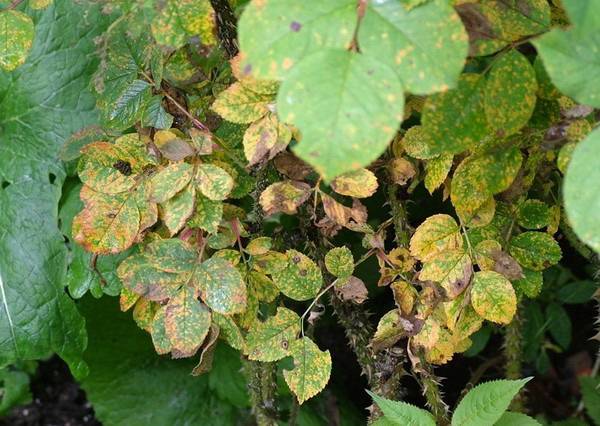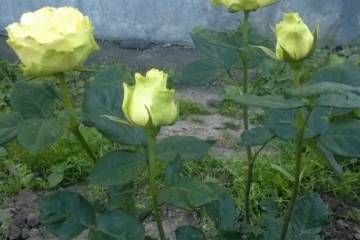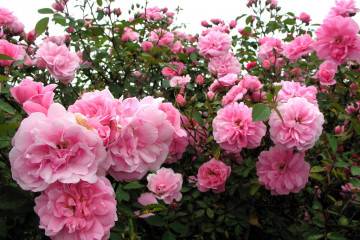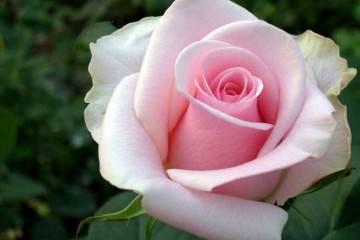Rose Cuthbert Grant from the Marshall collection
Content:
Rose Cuthbert Grant is a winter-hardy culture that was bred in Canada, and therefore has excellent decorative properties. To succeed in growing it, you need to provide the bushes with optimal care. It includes timely watering, fertilization, pruning.
Rose Cuthbert Grant - what is this variety
Cuthbert Grant is a rose that owes its appearance to the breeder W. Sanders. This happened back in the 19th century. The scientist crossed hardy varieties, resulting in a hybrid that can withstand temperatures as low as -30 ° C.
Brief description and characteristics
According to the description, the plant has inflorescences with a diameter of 9-10 cm. They are distinguished by a semi-double structure and a cup-shaped shape. The flowers are red with purple hues and a velvety texture. The buds are located on long, delicate pedicels. Each inflorescence contains 3-9 buds.
The Canadian rose Cuthbert Grant is characterized by abundant flowering in June. It then repeats in September. The plant has a strong aroma and light green foliage. It has a glossy texture and is resistant to black spot and powdery mildew. The variety has straight bushes 90-120 cm high. It is characterized by tough and thick shoots.
Advantages and disadvantages of the variety
Park rose Cuthbert Grant has many advantages:
- resistance to severe frosts;
- unpretentiousness to conditions of detention;
- long flowering period;
- easy to cut;
- disease resistance;
- no need for shelter for the winter;
- resistance to temperature fluctuations.
Of the minuses, flower growers emit an insufficiently intense aroma.
Use in landscape design
The rose is actively used in landscape design. Most often it is used to form hedges. Flowers can be used to make unusual living fences and borders. The plant looks great in the center of the flower bed.
Curly varieties of culture fit perfectly into gazebos and entwine arches. They can be the backdrop for small bushes.
Growing a flower: how to plant it in open ground
In order for the plant to grow normally and please with its decorative properties, it is important to carry out planting work correctly.
The culture is characterized by unpretentious care. It is recommended to buy seedlings in specialized stores. It is important to choose healthy shrubs. They can be open-rooted or closed-rooted.
Seat selection
Bushes require a lot of air and sun. They also develop well in partial shade.It is forbidden to plant a park rose in the lowlands. Cold air accumulates in these places, due to which rotting of the roots is possible. Also, the flower grows poorly in corners and dead ends, since it suffers from a lack of air.
How to prepare the soil and flower for planting
The soil must be prepared in the fall. It must be dug up, roots and stones removed. After that, the plant is fed with organic and inorganic agents. Ash, superphosphate and mullein are introduced 2 weeks before planting.
Planting procedure step by step
To plant a plant, you need to do the following:
- Remove the leaves, leaving the last 2.
- Trim roots and remove diseased fragments.
- Dig a 70 x 70 cm depression.
- Pour a bucket of water into it.
- Place a seedling in the hole and spread the roots.
- Sprinkle with soil, mixing it with sand. The root collar should be 5-6 cm deep.
- Sprinkle with earth. It should form a hill as it will settle when watering.
Plant care
In order for the plant to retain its decorative properties as long as possible, it needs to be provided with full care.
Watering rules and humidity
The plant can hardly tolerate dry soil. Therefore, in dry weather, it must be watered abundantly. A large amount of moisture is required for spring feeding. The rest of the time, the culture needs moderate watering.
Top dressing and soil quality
Lack of fertilization leads to a rapid depletion of the soil. Therefore, in the spring you need to add nitrogenous means, and in the summer - compositions based on phosphorus and potassium.
Pruning and replanting
In early spring, you need to remove damaged fragments, frozen branches, dry foliage from the bushes. Thickened bushes must be thinned out.
Features of wintering a flower
The plant is resistant to frost. Before the arrival of cold weather, the soil must be covered with a mulch layer and covered with snow. In some cases, the rose needs insulation. In this case, its flowering begins earlier.
Blooming rose
This plant has excellent decorative properties, while it does not require specific care.
A period of activity and rest
The variety begins to bloom first in the flower bed among other rose bushes. After rest, the second flowering occurs, which turns out to be more magnificent. The flowers become darker and more expressive.
Care during and after flowering
During the flowering period, you need to apply phosphorus-potassium fertilizers, weed, remove weeds and water the bushes.
What to do if it does not bloom
The lack of flowering is associated with such factors:
- lack of sun;
- improper pruning;
- landing in a draft;
- lack of dressing.
Flower propagation
The flower can be propagated in different ways - by cuttings, layering, dividing the bush.
Most often, the variety is propagated by cuttings. To do this, you need to cut the shoots, overlay them with peat and place in the refrigerator. In the spring they need to be cut and placed in a container of water. When roots appear, the planting material is planted in the ground.
Diseases, pests and ways to control them
Fungi lead to the development of diseases. Also, the plant can be affected by viruses and bacteria. In such a situation, you have to use chemicals. In addition, it is worth pruning the affected areas.
The Canadian rose Cuthbert Grand is considered a hardy plant that will adorn any site. To preserve the decorative properties of a culture, it must be properly looked after.


















